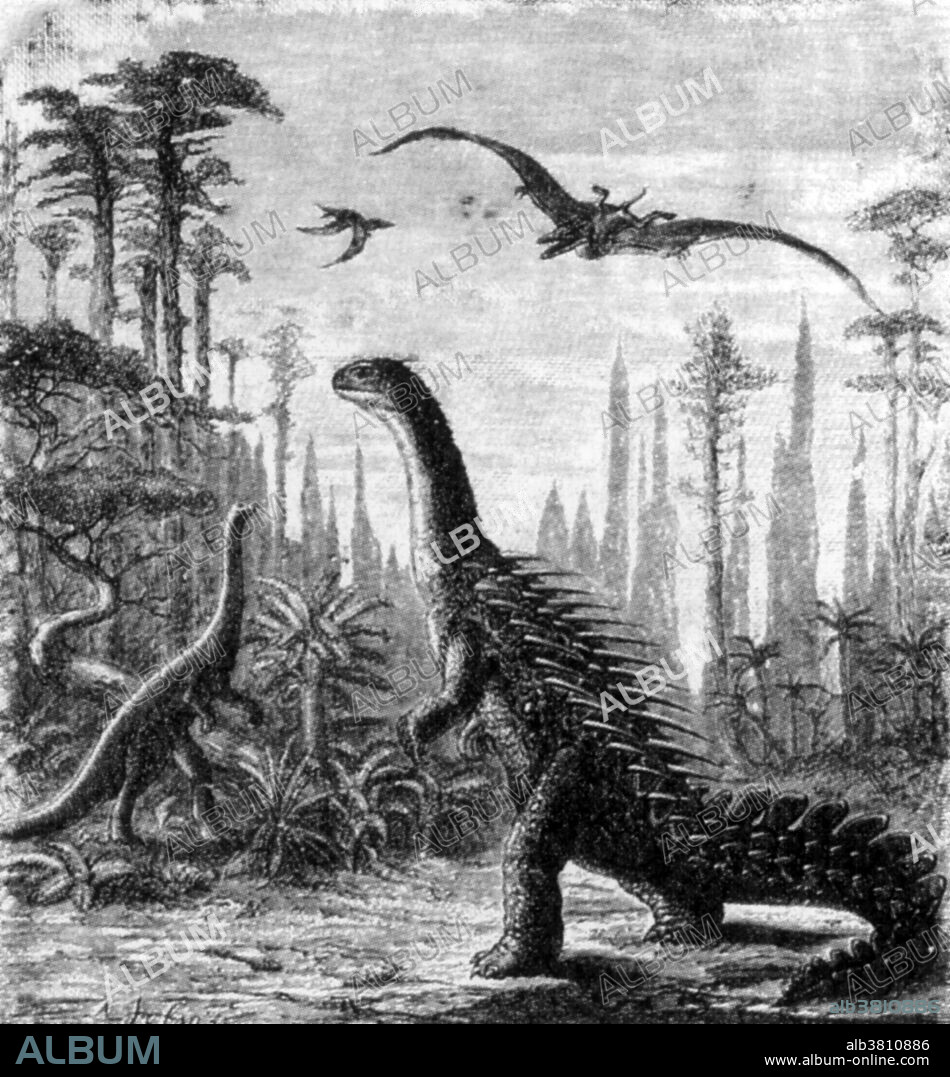alb3810886
Stegosaurus and Compsognathus Dinosaurs

|
Añadir a otro lightbox |
|
Añadir a otro lightbox |



¿Ya tienes cuenta? Iniciar sesión
¿No tienes cuenta? Regístrate
Compra esta imagen

Título:
Stegosaurus and Compsognathus Dinosaurs
Descripción:
Ver traducción automática
Dinosaurs of the Jurassic Period: Stegosaurus (right) with Compsognathus (left) and Pterodactyls flying. This inaccurate etching shows an early attempt by Othniel Charles Marsh to reconstruct a plated dinosaur from fossil evidence, with hedgehog spines instead of bony plates. Stegosaurus means "roof lizard" or "plated lizard". One of the various plated dinosaurs (Stegosauria) of the Late Jurassic Period (159 million to 144 million years ago) recognizable by its spiked tail and series of large triangular bony plates along the back. Stegosaurus usually grew to a length of about 21 feet, but some reached 30 feet. The skull and brain were very small for such a large animal. The forelimbs were much shorter than the hind limbs, which gave the back a characteristically arched appearance. The feet were short and broad. They are classified as a quadrupedal herbivorous ornithischian dinosaur. Compsognathus is a genus of small, bipedal, carnivorous theropod dinosaurs. Members of its single species Compsognathus longipes could grow to the size of a turkey. From Scientific American, November 29th, 1884.
Crédito:
Album / Science Source / New York Public Library
Autorizaciones:
Modelo: No - Propiedad: No
¿Preguntas relacionadas con los derechos?
¿Preguntas relacionadas con los derechos?
Tamaño imagen:
3328 x 3588 px | 34.2 MB
Tamaño impresión:
28.2 x 30.4 cm | 11.1 x 12.0 in (300 dpi)
Palabras clave:
1884 • ANIMAL • ANIMALIA • ARTE • BIPEDO • BLANCO Y NEGRO • CARNIVORO • CHAPADO • CHORDATA • CUADRUPEDO • DIBUJO • DINOSAURIA • DINOSAURIO • DINOSAURIOS • EDAD • ERA MESOZOICA • EXTINCIÓN • EXTINGUIDO • FAUNA • GRABADO • HERBIVORO • HISTORIA • HISTORICO • ILUSTRACION • INEXACTA • JURÁSICO • MESOZOICO O ERA SECONDARIA • OBRA DE ARTE • PALEOBIOLOGIA • PALEONTOLOGIA • PERIODO JURASICO • PERIODO • PREHISTORIA • PREHISTORICO • REPTIL • REPTILIA • SIGLO XIX • TEROPODO • VERTEBRADO
 Pinterest
Pinterest Twitter
Twitter Facebook
Facebook Copiar enlace
Copiar enlace Email
Email
